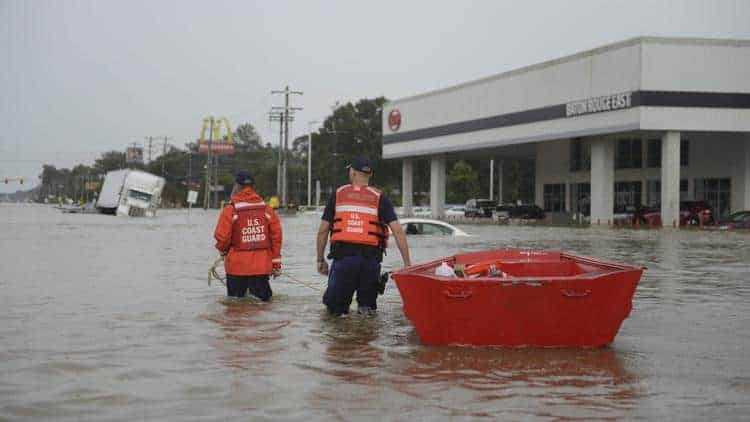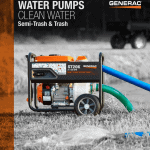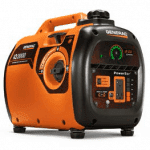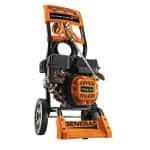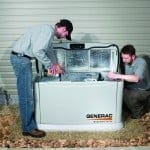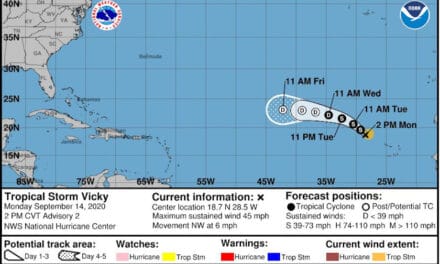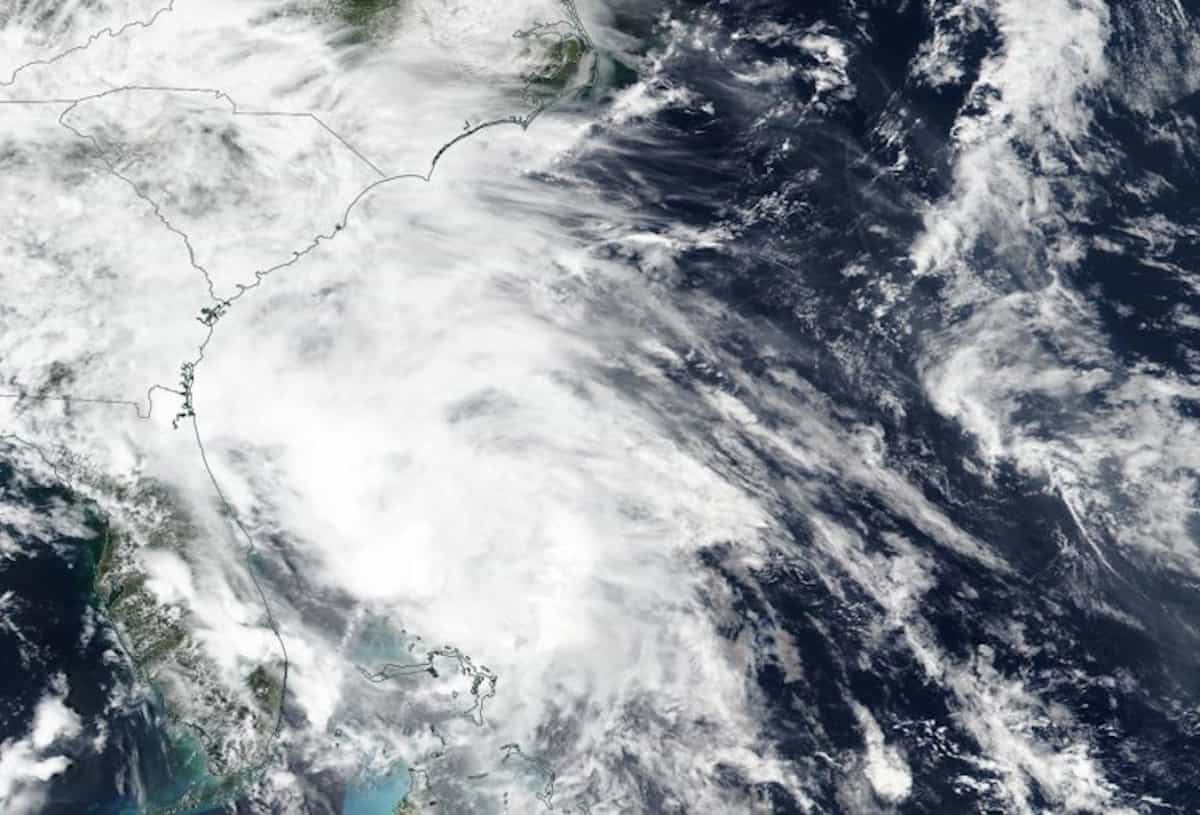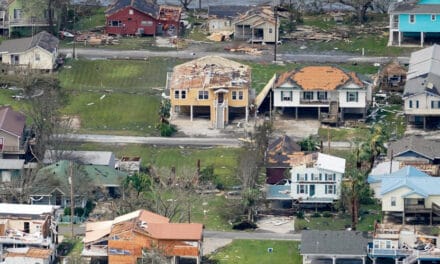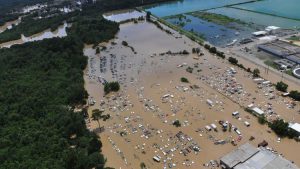
Homes inundated by flood waters after record rainfalls between August 11 and 14, 2016.
(US Coast Guard Photo)
Beginning on August 11 through the 14, as much as 32 inches of rain fell on parts of southern Louisiana. Flood water rose quickly and forced tens of thousands of people from their homes. The flooding is historic. Images of the devastation range from disheartening photos of flood ravaged homes and displaced residents to uplifting stories of rescuers using their own boats, rafts, and even canoes to save thousands of lives in an effort they are calling the Cajun Navy. The flood has claimed at least thirteen lives and displaced tens of thousands of residents.

Coast Guard Rescuers look for trapped residents along a flooded road in Louisiana.
(US Coast Guard Photo)
The rainfall was comparable to that produced by a slow moving tropical storm and was born out of a low pressure system just off the gulf coast between the Florida Panhandle and Louisiana. The NOAA’s National Hurricane Center reported on the low and warned that it had the potential to produce large quantities of rain and cause flooding.
Louisiana was the hardest hit of four states that included Mississippi, Florida, Louisiana, and Missouri. The flooding has far surpassed previous records set by other historic floods. A flood gauge on the Amite River at Magnolia, Louisiana reached 46.2 feet, on August 14, five feet over the highest previous record of 41.5 feet set in 1983.
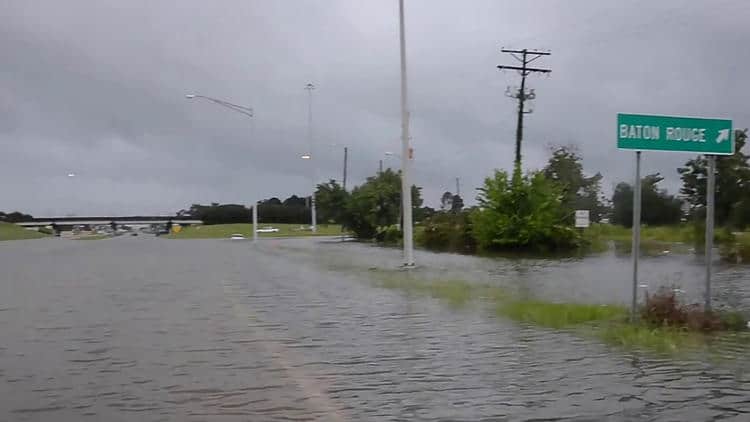
Louisiana Roadways have turned into waterways more suitable for boats than land vehicles.
(LA National Guard Photo)
President Obama declared a major disaster on August 14, 2016 opening the doors to Federal Assistance for affected Parishes in Louisiana. Federal Assistance is provided through FEMA, the Federal Emergency Management Agency. This action makes federal assistance available to affected residents and organizations associated with rescue and rebuilding efforts.
Resources
This page contains links to numerous resources including local assistance and individual needs for food and shelter, FEMA Disaster Recovery Centers (DRCs), and Red Cross Units.
Click on “Online Application” and fill it out, even if your area is not yet included. When asked for the disaster, enter 4277. If your area is not yet declared, just click next to proceed. Applications are processed after an area is included in the declared disaster.
Provides for the reimbursement of generator costs under the Other Needs Assistance provision of the Individuals and Households Program. Reimbursements are allowed for generators to power medically required equipment including a medically required refrigerator. Covered costs include the established retail price or the cost of a rental unit up to 5.5 kilowatts. This includes portable generators. Rental fees are covered up to the date that commercial utility power is restored. Save all receipts and read the FEMA Recovery document on the page.
FEMA Louisiana Disaster Page for Declaration 4277
- Information on Parishes currently included in the major disaster declaration.
- Shelter resources, the FEMA App, Flood Insurance Claims, Updated Blog for response efforts.
- Register to let friends, family and loved ones know that you are safe and well.
Follow three steps to file a claim.
- Contact your flood insurer. Have your policy number, current email address and phone number available.
- Document the damage with photographs if possible. Make a list of all lost or damaged items including the date of purchase, value, and a receipt if possible. Show structural damage, discarded items, and the floodwater or high water marks. Include any standing water in your photos.
- Complete a proof of loss statement to support your claim. Your flood insurance adjuster will assist you with this.
Read the FEMA National Flood Insurance Program Fact Sheet.

